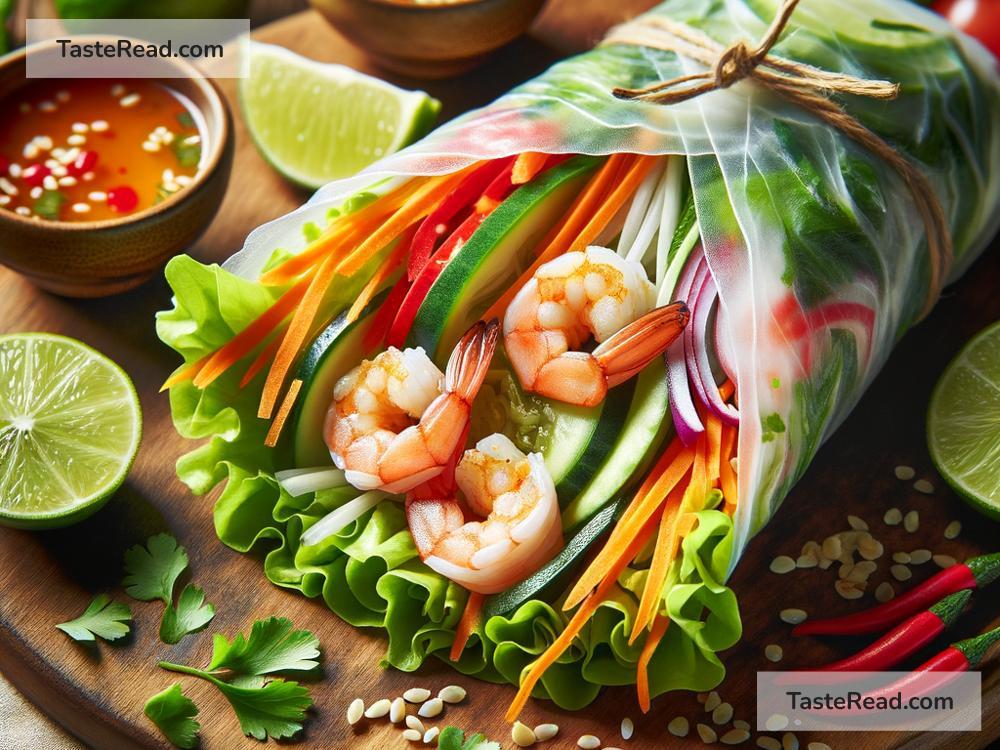Celebrating the Timeless Techniques of Vietnamese Rice Paper Wrapping
Vietnamese rice paper wrapping is a culinary art that has won the hearts of food lovers worldwide. Its simplicity, versatility, and delicious results make it a staple in Vietnamese cuisine, and it’s easy to see why. Whether you’re enjoying fresh spring rolls (gỏi cuốn), crispy fried rolls (chả giò), or using rice paper as a creative twist in fusion dishes, wrapping with rice paper allows for endless culinary possibilities. Let’s celebrate this timeless technique and uncover why it has become such a beloved tradition in Vietnamese cooking.
What is Vietnamese Rice Paper?
Rice paper, or bánh tráng, is made from rice flour, water, and a touch of salt. The ingredients are mixed into a smooth batter, then steamed into thin, round sheets and dried. The result is delicate yet sturdy paper-like sheets that form the foundation of many Vietnamese dishes. Rice paper can be soft and chewy or crispy and crunchy, depending on how it’s prepared. This versatility is one of the reasons it’s so popular in Vietnamese cuisine and beyond.
A Blend of Beauty and Tradition
Rice paper wrapping is more than a cooking technique—it’s part of Vietnamese culture. This method is tied to the concept of balance and harmony in Vietnamese cuisine, where flavors, textures, and colors come together beautifully. Wrapping food in rice paper allows you to showcase the fresh ingredients inside, celebrating their natural beauty without overpowering them with heavy sauces or seasonings.
Traditionally, families in Vietnam gather around the dining table to make their own rice paper rolls. It’s a communal activity that brings loved ones together. The act of assembling and wrapping food becomes just as important as enjoying the meal itself.
Versatility in Every Bite
One of the reasons Vietnamese rice paper wrapping is so cherished is its ability to cater to any taste. Rice paper allows you to create dishes that suit your dietary preferences or satisfy cravings for certain flavors. Here are some common ways rice paper is used in Vietnamese cooking:
1. Fresh Spring Rolls (Gỏi Cuốn)
Fresh spring rolls are a classic example of rice paper wrapping at its finest. To make them, rice paper is softened with a quick dip in warm water and then filled with fresh ingredients like cooked shrimp, pork, vermicelli noodles, lettuce, herbs (like mint and cilantro), and cucumber slices. The rolls are tightly wrapped, creating a handheld dish that bursts with freshness in every bite. Served with peanut sauce or nuoc cham (fish sauce dipping sauce), these rolls are a healthy, flavorful treat.
2. Fried Spring Rolls (Chả Giò)
For a crispy twist, rice paper is used to make fried spring rolls. The filling may include ground pork, shrimp, mushrooms, carrots, and glass noodles. Unlike fresh rolls, these are fried until golden brown, creating a crunchy outer layer that contrasts beautifully with the savory filling inside. Fried spring rolls are often served as appetizers, eaten with lettuce wraps and dipped in tangy fish sauce.
3. Creative Twists
The adaptability of rice paper has inspired many chefs worldwide. People use it as a base for pizza, a substitute for tortillas, or even a vessel for dessert fillings like fresh fruit and whipped cream. While traditional Vietnamese dishes remain iconic, modern interpretations show how rice paper can push culinary boundaries.
Techniques for Perfect Wrapping
Learning how to use rice paper can be intimidating at first, but with a little practice, it becomes second nature. Here are a few tips for mastering rice paper wrapping:
1. Soak the Rice Paper Properly
Rice paper starts out dry and crispy, but dipping it in warm water softens it for wrapping. The trick is to dip the paper quickly—just a few seconds—so it becomes pliable but not so wet that it tears easily.
2. Don’t Overfill
When adding your fillings, less is more. Overfilling can make the rice paper difficult to roll. Instead, aim for even layers to ensure smooth wrapping.
3. Practice Makes Perfect
It might take a few tries to get the hang of folding and rolling neatly, so don’t worry if your first rolls aren’t perfect. Keep practicing, and soon you’ll be wrapping like a pro.
Bringing the Tradition Home
One of the joys of rice paper wrapping is how simple it is to do at home. All you need is a pack of rice paper, a bowl of warm water, and your favorite ingredients. It’s a fantastic way to explore Vietnamese cuisine and enjoy healthier, homemade meals.
Rice paper wrapping is also a fun group activity. Invite friends or family over for a “build-your-own-roll” party. Lay out a spread of ingredients—proteins, vegetables, sauces, and herbs—and let everyone create their own custom rolls. It’s a delicious way to connect and learn from one another.
A Timeless Culinary Tradition
Vietnamese rice paper wrapping is more than just a technique—it’s a celebration of fresh ingredients, creativity, and communal dining. Each roll tells a story of balance and tradition, making it a timeless part of Vietnam’s cultural heritage. Whether you’re wrapping spring rolls for the first time or perfecting your favorite recipe, this technique reminds us that simplicity in cooking can lead to unforgettable meals.
So, why not give rice paper wrapping a try? Celebrate this art form with graceful rolls filled with flavor, love, and a touch of Vietnamese tradition. You might just find yourself falling in love with this timeless culinary practice.


